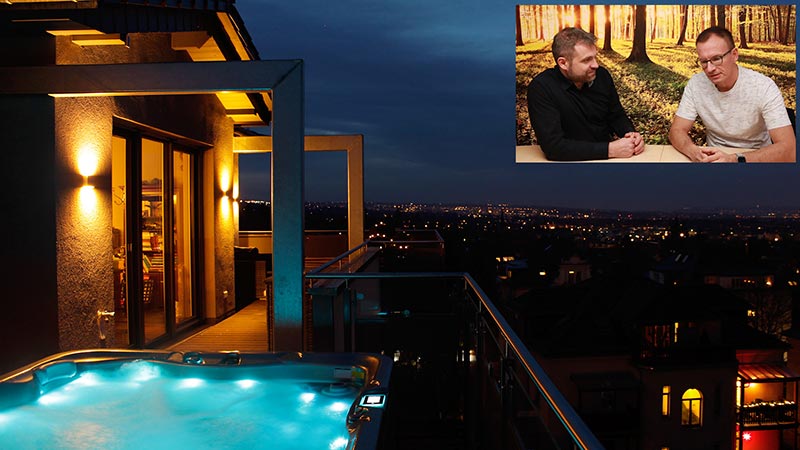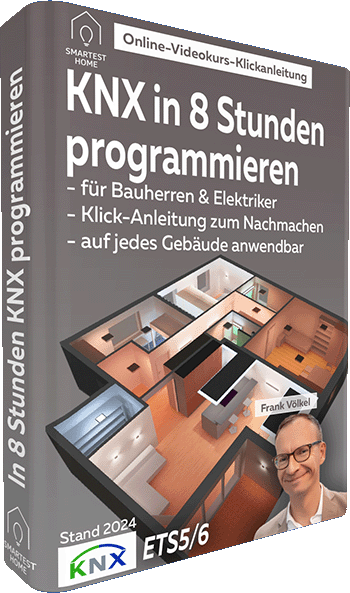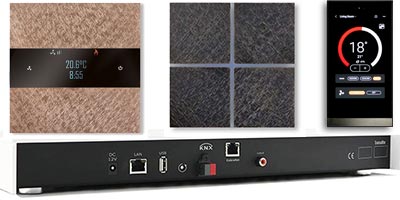
The most important rule when it comes to lighting in the house of the year 2023 is: It is best to plan a mixture of direct and indirect lighting. The times are long gone when only a single lamp (halogen or incandescent lamp in those days) hung from the ceiling in the middle of the room. We need a consistent lighting concept! At the same time, this also means that we only use modern LED lighting, which can be easily integrated into ceilings, walls and stairs.
After all, several lights in different positions in a room ensure the right mood and light in the room. Set different accents, because in a modern house the lighting can be called up as required and in different scenes/moods at the push of a button (with DALI control and with DMX control). But what does the perfect light planning for lighting in a new house or a new apartment look like (as of May 2023)?
How many lumens do you need? To do this, we will deal with the basics that lead step by step to perfect lighting planning. Without precise lighting planning, you will not feel comfortable in your house/apartment from the start! The video “Why light needs planning” also provides an introduction and goes into the basics of lighting planning in a single-family house.
Table of contents lighting plan
Basics of light planning: Natural light has priority!
The first question is: What is the best way to flood a room with natural light, possibly even sunlight? How much light in the room do I need? Because there is nothing better than natural light. Then questions like “What is the color of the individual walls, floors, ceilings and furniture in the individual rooms”? How big are the windows, how many windows and possibly floor-to-ceiling glazing does a room have? Because: The brighter a room is in the house, the less additional artificial light is required.
What is the fundamental use of lighting plan?
The next question arises with a new building: Where should the wall and ceiling outlets be placed so that there is sufficient light in the respective rooms? If you don’t plan all the lights and lamps precisely, you can hardly make up for this omission later. Either walls are pried open or extension cords have to be hidden in order to additionally set up suitable lights.
A complete lighting plan always includes all rooms in a house and also includes the outside areas such as the garden, swimming pool or pool and garages with carports. Not to forget the facade lighting and the very important entrance area. Especially with the latter lighting concept, atmospheric and suitable lighting ensures the first impression – whether a house or building appears inviting and of high quality (even at night) or not. The lighting of the entrance gate with door communication, intercom and mailbox is also important. It almost goes without saying that the house number should also be illuminated.
How does lighting support well-being?
A high proportion of blue light in the lighting ensures that the production of the sleep hormone melatonin is stopped and broken down. At the same time, the production of serotonin is stimulated. This makes sense if we work later in the evening and don’t want to sleep right away. Or we move in the fitness area. Due to the high proportion of blue light, we are ultimately fitter and can concentrate very well. On the other hand, light with a high yellow/red component has a calming effect and ensures better sleep. This makes sense, especially in the evening hours, so that we can slowly adjust to sleep at night.
The video contribution “Comparison of light quality LED spots: Inexpensive vs. high-priced” deals with the advantages of good lights and their positive effect on health.
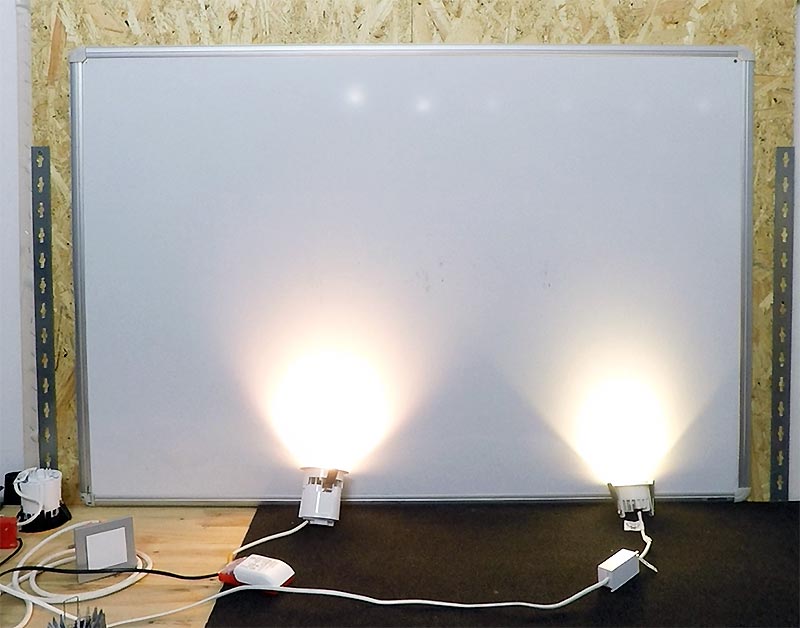
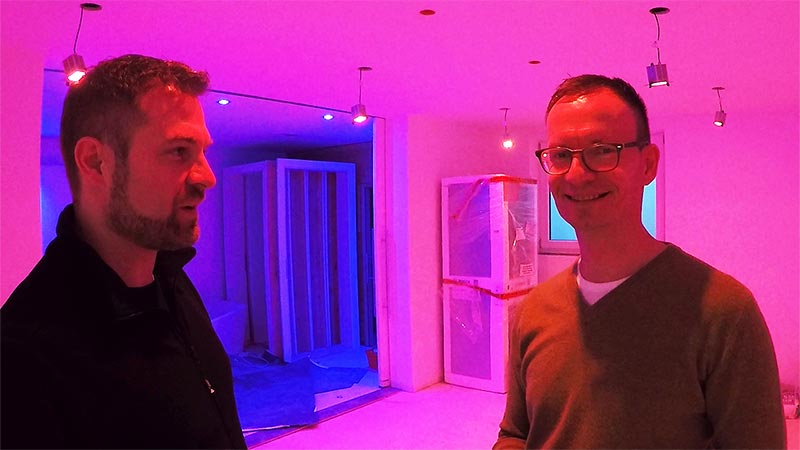
Why dimmable light?
The times are long gone when a lamp/luminaire can only be switched on and off. The brightness of most lights – especially those intended for a modern smart home – can be dimmed today. This has the advantage that they can be set brighter in the early evening hours than, for example, at night. With our KNX Smart Home, this all happens automatically when certain lights in a room are combined into a scene. In addition to normal dimming, it is also possible to adjust the color value from “warm white” towards “cold white” for certain lights. These lights are then called “dim to warm” lamps and are very often available as ceiling spots.
The article “Party mood with LED light scenes and dimming” uses the example of a room to show how the mood changes with the light color and light brightness.
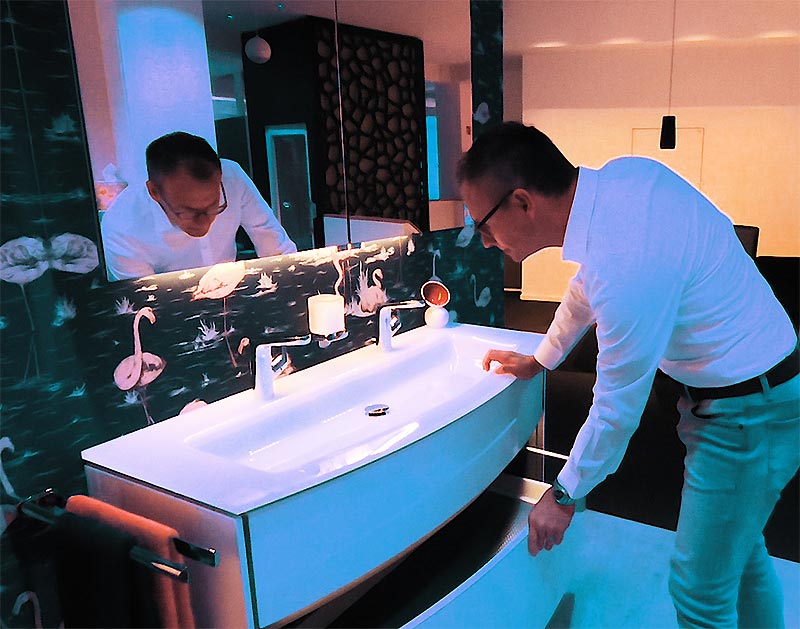
Top 10 rules for room lighting
Every room in the house has a specific function and its own use. For example, the kitchen needs different light than the bedroom. It therefore makes sense to consider rooms separately according to their function and to illuminate them differently. There are also individual preferences: one builder attaches great importance to atmospheric lighting in the bathroom, while another wants to equip his garage with particularly good light because the car may be very important to him. Despite all individual preferences, the following top 10 rules help to create the right light for every room in every house (or apartment).
Let’s start with the interior: Living rooms, bedrooms, children’s rooms, guest rooms and bathrooms are particularly the rooms in which one stays longer day and night and mostly for relaxation. We therefore recommend: planning several and different light sources in the lighting concept right at the beginning in order to ensure a good mood (and later moods that can be changed at the push of a button). Small rooms can be optically enlarged with good light and appear more pleasant, larger rooms are usefully divided into different areas, which can also be illuminated separately with different light circles.
In the video “Light planning for house/apartment with LEDs” we go into the basic possibilities of today’s room lighting.
How many lumens do you need per room?
Then there is the fundamental question that all builders with a bit of ambition ask themselves: How many lumens do you need per room, the light that is ultimately generated by the luminaires? There is the first answer: It depends on the use of the room and the individual needs. The essential value is the specification “lumen per square meter” (lumen per square meter), i.e. how much light is required per square meter of living space. The table below provides rough guidelines.
What color temperature do I need for lamps?
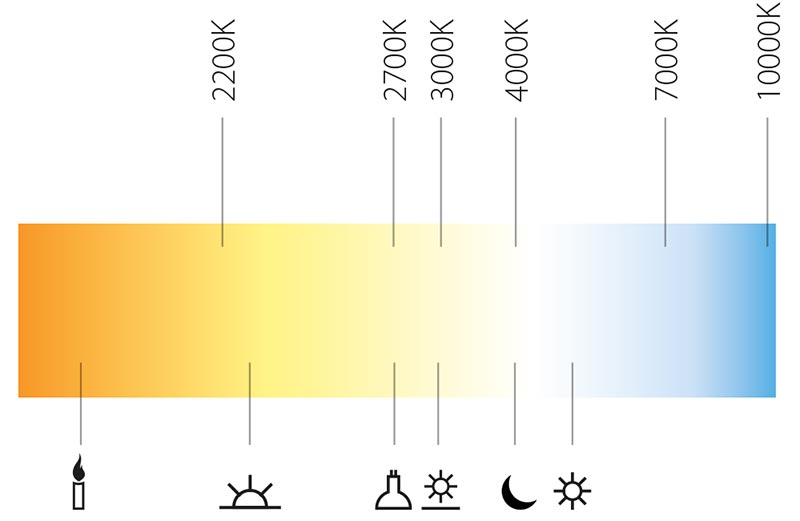
The table above makes it clear: Cozy and romantic candlelight has a warm white character and a color temperature of around 1800K. In contrast, a warm incandescent lamp has a color temperature of 2300K to 2500K. Halogen lamps come to around 3000K and above that it becomes really cold white light with >3500K. Natural sunlight offers the full spectrum throughout the day.
Today’s high-quality LED lights can replicate almost the entire spectrum of sunlight – from Dim2-Warm from 1800K up to 3000K and beyond with cool white light.
kitchen: Lots of light in the room
The kitchen needs a well-planned lighting design that also includes kitchen island, cabinets and vanity units. We recommend high-quality LED spotlights on the ceiling, which are not placed too far apart. This creates bright and, above all, glare-free lighting that can be optionally dimmed – for example at parties. So we have enough light in the room in the kitchen.
Our video “Light scenes: Good atmosphere in the bathroom and kitchen” shows examples from our practice.
Additional lights on the wall (up/down lights) help work on the worktop, stove and sink. It is also advisable to install LED strips under the wall cabinets so that the light falls directly on the workplace. They should be shielded to the front so that their light does not dazzle. Glare-free lights are usually integrated into the extractor hood above the cooker.
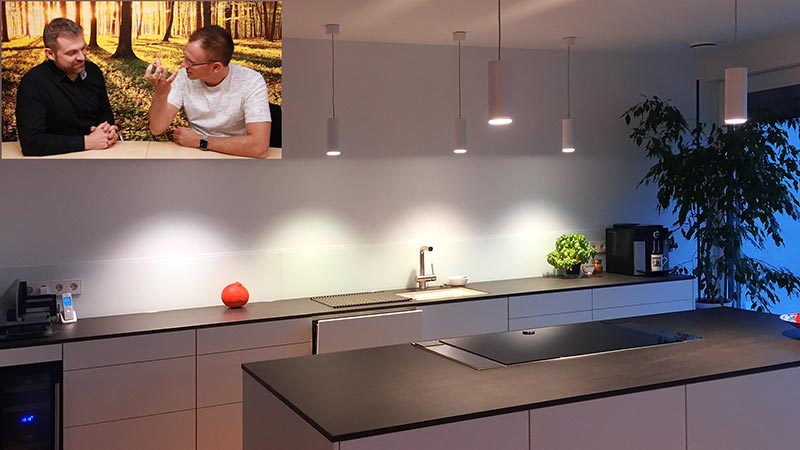
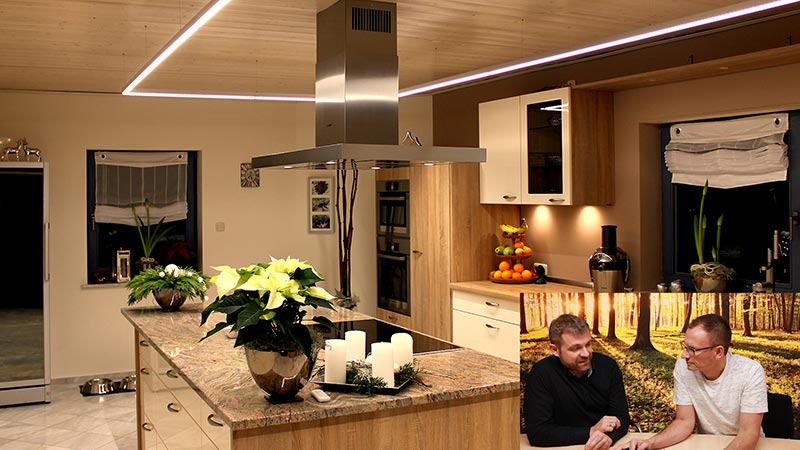
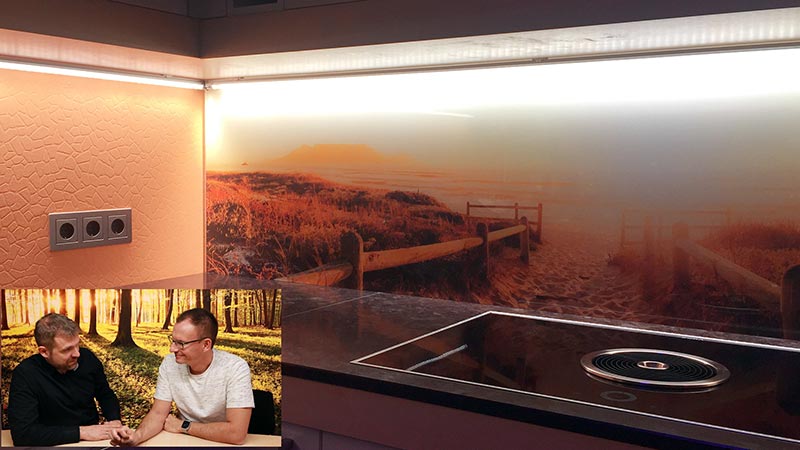
Living room: lighting with a lighting concept
The larger the room, the more creative you can be when planning the lighting. Combine two to four types of secondary lighting with the basic lighting. To read on the couch, you need bright light that falls on the book from the side and from behind and illuminates the reading area without shadows. Floor lamps and floodlights with a reading light, or a pure reading light (floor lamp with swivel or articulated arm) are ideal for this. Particular attention should also be paid to the ambient lighting around televisions: the light here should only illuminate the adjacent wall, and the other light sources in the room should not cause any annoying reflections on the screen either. Uplighters in the corner or LED strips in the background of the television are very suitable.
In the video “LED light for all rooms: Kiteo built-in spotlight, Stripe, surface panel” we present the most important LED lights for a larger living room. The article “Installing dimmable color LED spots” uses a lamp as an example to show the space that an LED spot needs in the (suspended) ceiling today.
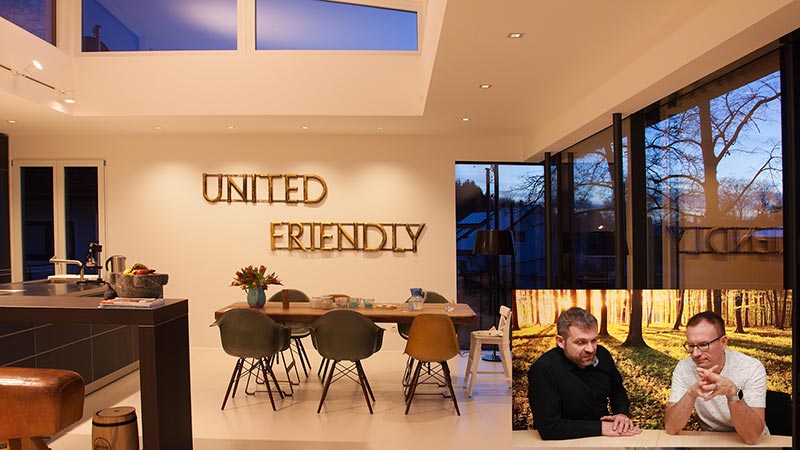
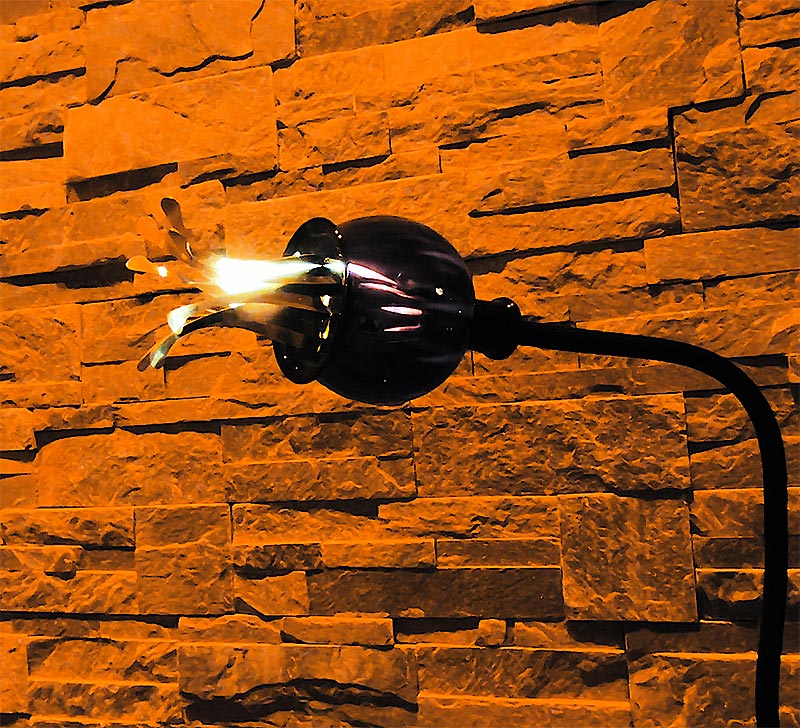
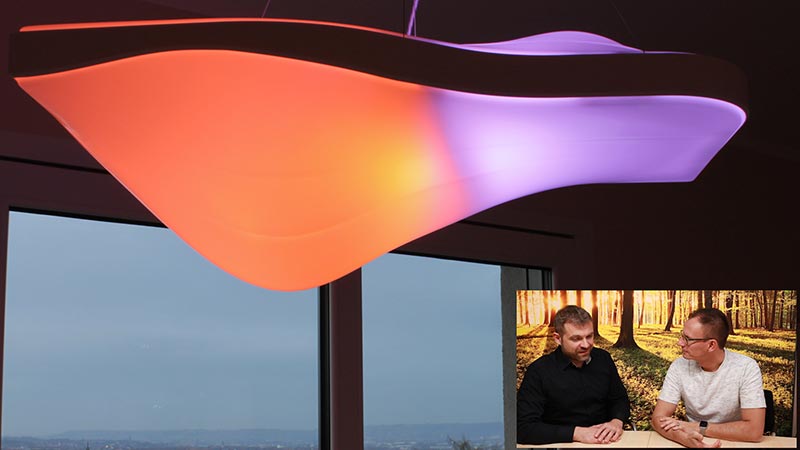
Bathroom lighting design: indirect lighting
Good indirect lighting should also be provided in the bathroom first. LED ceiling spotlights or recessed lights are recommended, as there are also many variants that are resistant to moisture (important: pay attention to protection class IP44 or IP45) and the light can be placed over a shower. But also ceiling spots – whether with or without a suspended ceiling is of secondary importance – are well suited.
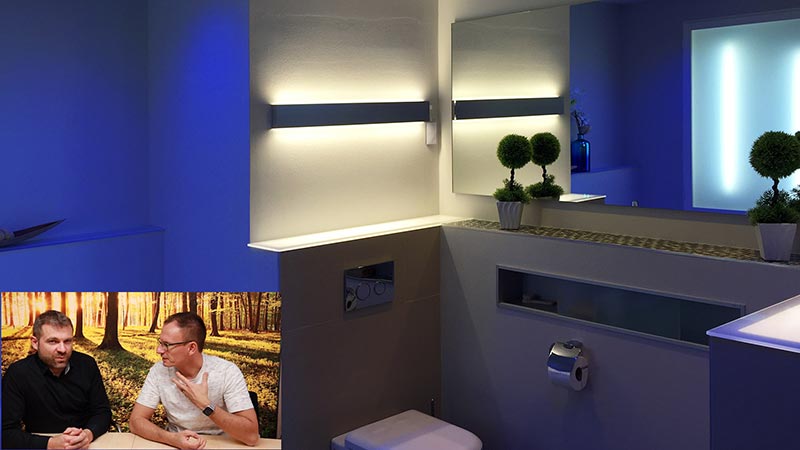
If you are redesigning your bathroom and buying furniture with integrated lighting, be sure to pay attention to the color of the light! Cheap LED lights with very cool white light are often installed – and these cannot then be deleted from the order. And because that’s the case, you also use the light on the mirror cabinet – and get annoyed every day because a pale, bluish face looks at you.
Especially with cold white LEDs, you often look worse in the mirror than in reality (keyword: poor color rendering index!). Tones that are too warm, on the other hand, often do not provide enough sharpness of light. Therefore, you should definitely clarify this detail with the seller beforehand and test the lighting before you buy it. LEDs with a maximum of 4000 K or halogen lamps with +3200 K behind a frosted screen or behind glass are often the better choice. The light from the integrated lamp should illuminate the surface of the mirror without shadows and without glare!
The video contribution “Light planning in the luxury bathroom: shower and bathtub” provides details on this.
If you set up a mini-spa at home, you should also ensure a cozy lighting atmosphere – for example with dimmable, possibly swiveling built-in lights over the edge of the bathtub or a dimmable LED strip on the edge to the ceiling.
Our video “Luxury bathroom with Kiteo Liquid” offers an insight into a very well equipped bathroom with perfect lighting.
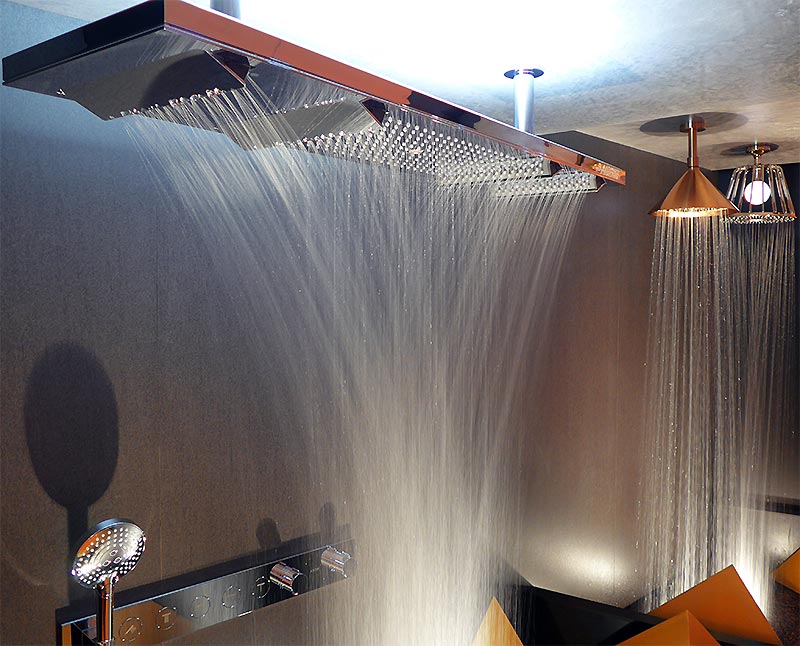
Bedroom lighting design: indirect and direct lighting
The same principle applies in the bedroom: indirect lighting and direct light in the form of wall lights (up/down spots or just down spots), including direct light for reading and lights for a pleasant atmosphere. If you want, you can illuminate cupboards from above, or stage the back or underside of the bed with a warm white LED strip. This creates an additional light source for romantic moments.
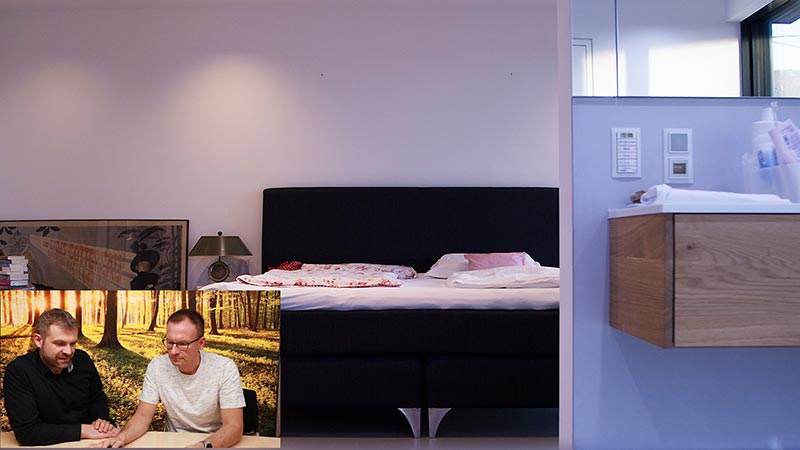
Children's room lighting plan: soft night light
Basic lighting (ceiling light), a reading light next to the bed and a desk light are important for school children. Basic lighting and a soft night light are usually sufficient for smaller children and babies. As far as possible, you should still think about the connections that will be required later (ceiling and wall outlets) and plan for (switchable) sockets (with integrated child safety devices) at an early stage.
Guest room lighting plan: Good basic lighting
A guest room can be designed like a hotel room: with basic lighting and one or two bedside lamps so that the guest can operate the light from the bed. A night light in the socket also helps with orientation in unfamiliar surroundings.
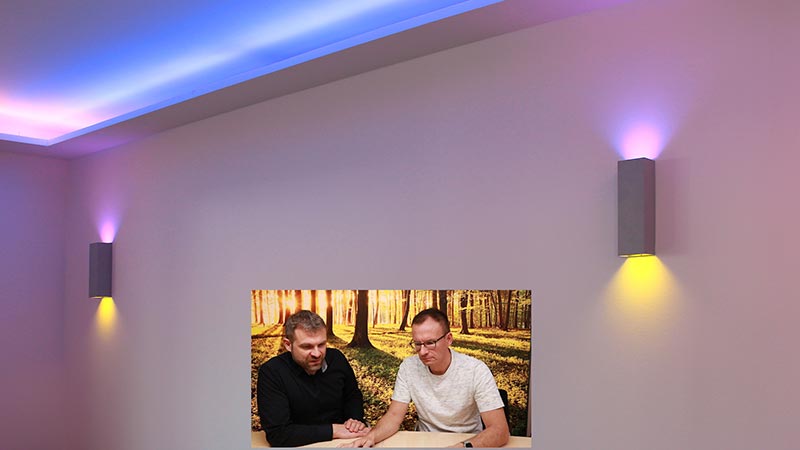
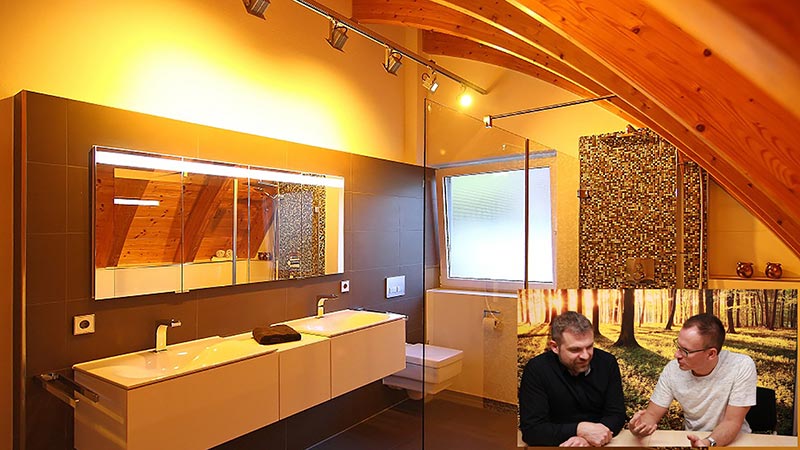
Stairs and corridors: automatic light via presence detector
In rooms whose primary function is to connect other rooms or levels with each other (corridors, stairs, galleries, entrance areas), it is all about one thing: you, your family and guests have to find the way! So don’t skimp on good lighting.
If you want to optimally illuminate a staircase, you will be well advised to use small recessed wall lights near the steps (in addition to the basic lighting). But you can also work with wall lights at shoulder height that shine upwards and downwards. There are also old buildings in which (spiral) stairs lead openly over several levels and in which a long pendant lamp hangs down from a power connection on the ceiling. In this case, at least one light source (a pendulum) should hang at the level of each level. Only high-voltage-based lights are usually suitable for such a solution, since the cable lengths can then usually be individually extended by the electrician.
If you want to avoid having to reach for the KNX button (KNX switch), you can install a KNX presence detector in the basic lighting of passageways. If lights are often switched on and off, you should generally pay attention to a high switching resistance. LEDs usually have these and are advisable in combination with motion detectors (provided their light brightness/lumen value is sufficient for the room).
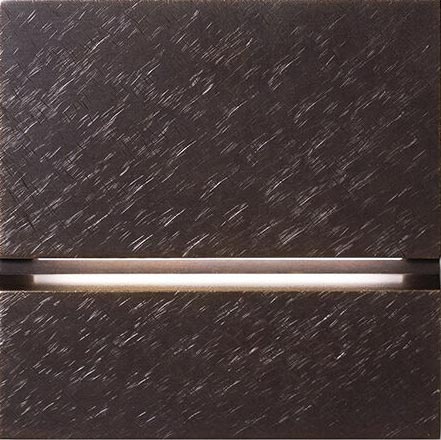
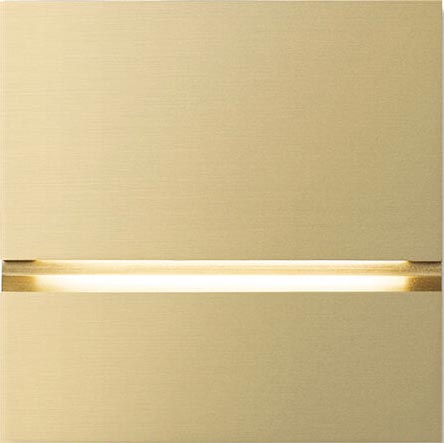
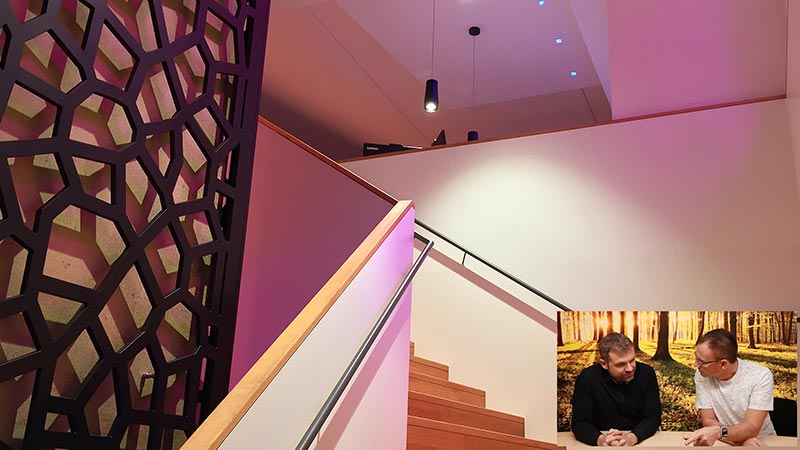
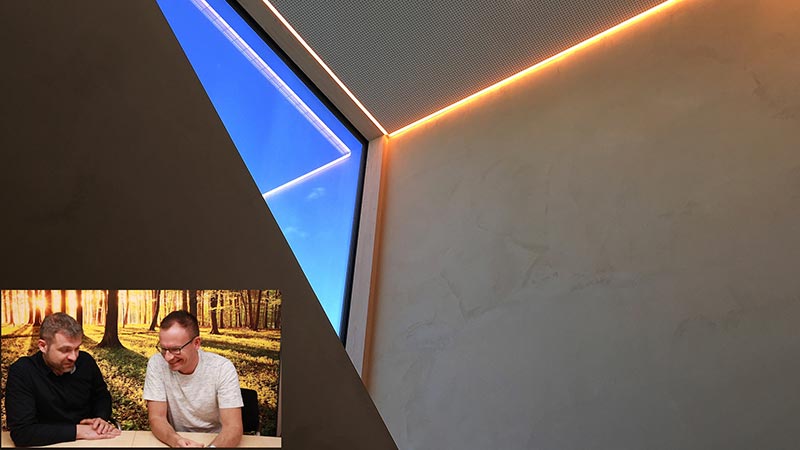
Study lighting design: Bright white-blue light
In places where we have to concentrate – for example when reading on the living area, cooking in the kitchen, doing office work or sewing and handicrafts – we need high-contrast, bright and targeted light. There should definitely be more white-blue components. Good LEDs with at least 3500 K are suitable here (4000 K is better, but that also depends on the lighting technology). The higher the K value, the whiter the light. At 6000K (and that’s really extremely white) the light emitted is called daylight. But don’t be fooled, it’s all about the color of the light, not the brightness or the color rendering properties of the light.
Our video “High-end LED lights for the study” shows LED ceiling spots that support residents/homeowners in their daily routine by changing the color temperature.
In addition to the basic lighting in the background, functional lighting is required to optimally illuminate usable areas. Good task lighting for desks and kitchen worktops deserves a special focus. The light should shine on the surface in such a way that you don’t cast yourself a shadow. Adjustable desk lamps with swiveling lamp heads are essential. For all work surfaces, the under-cabinet lights, surface-mounted lights or LED strips should be attached in such a way that the light comes from above and illuminates the surface evenly with their light cones. Light planners can calculate the optimal illumination of such work areas.
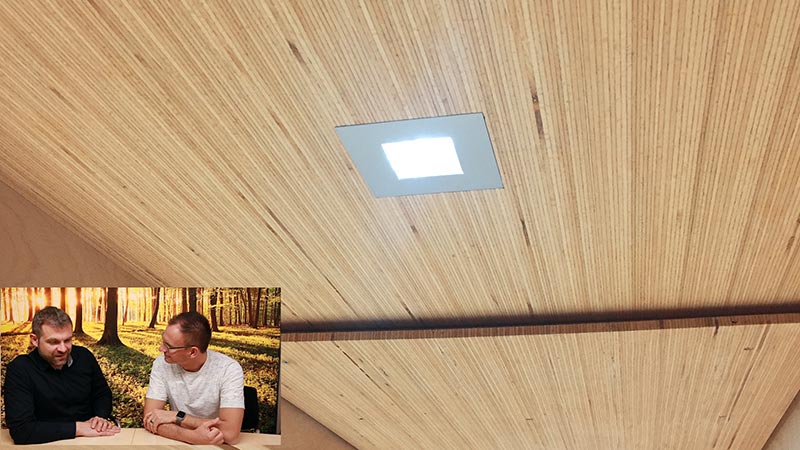
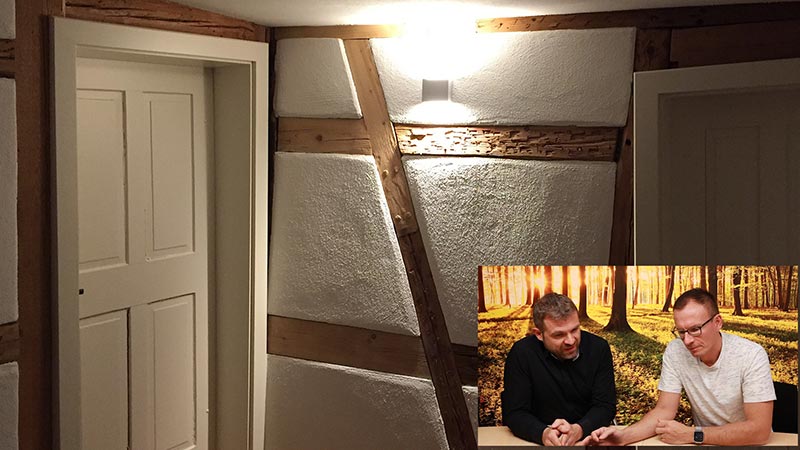
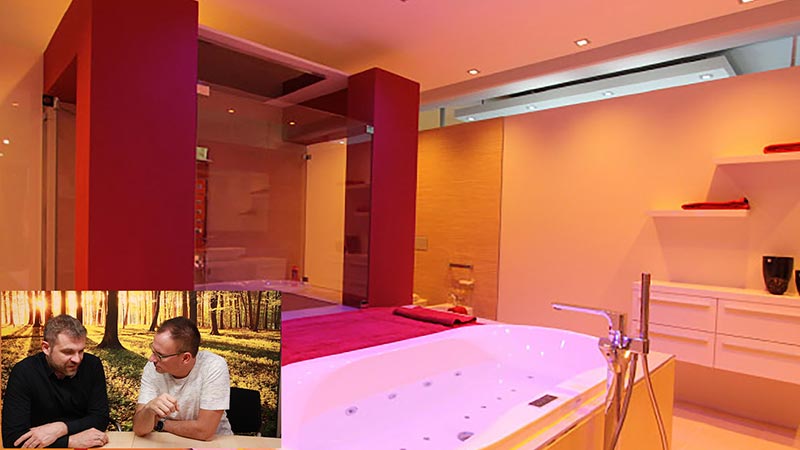
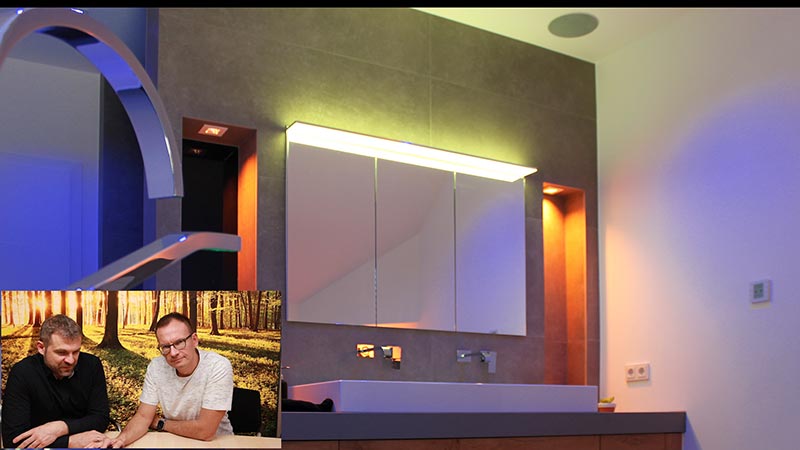
Outdoor areas and garden: Accent lighting
Lighting plan for outdoor areas differs from room lighting in many areas. While indoors there is a three-way division of basic, secondary and accent lighting, this does not apply to outdoor lighting. Instead, outdoor lights primarily fulfill two functions: creating orientation and atmosphere. Of course, it is particularly important that you also ensure that your outdoor lighting has the necessary outdoor IP protection, otherwise your lamps could be damaged by rain or snow.
With the help of the so-called orientation light, you ensure that both you and your guests come safely into the house. For this purpose, it is important to ensure good illumination of the house entrance with sensible path lighting.
For example, you can provide the necessary orientation with the help of bollard lights or outdoor wall lights with motion detectors that run along the house entrance.
But of course the outdoor area can also be designed with light. Practical mobile table lamps and portable floor lamps are particularly suitable for solid terrace lighting. Ideal for a barbecue evening with the family or a football evening with friends.
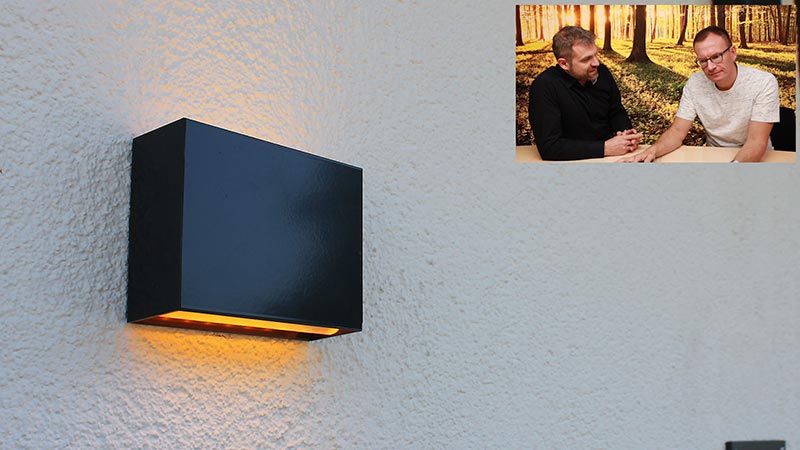
Pool and swimming pool: mood lighting
There are houses and apartments designed by us that have a private swimming pool or an outdoor pool. In order to create an atmospheric mood, targeted lighting is very important. This can be through underwater lights in the pool itself or through built-in LED spotlights on the edge.
